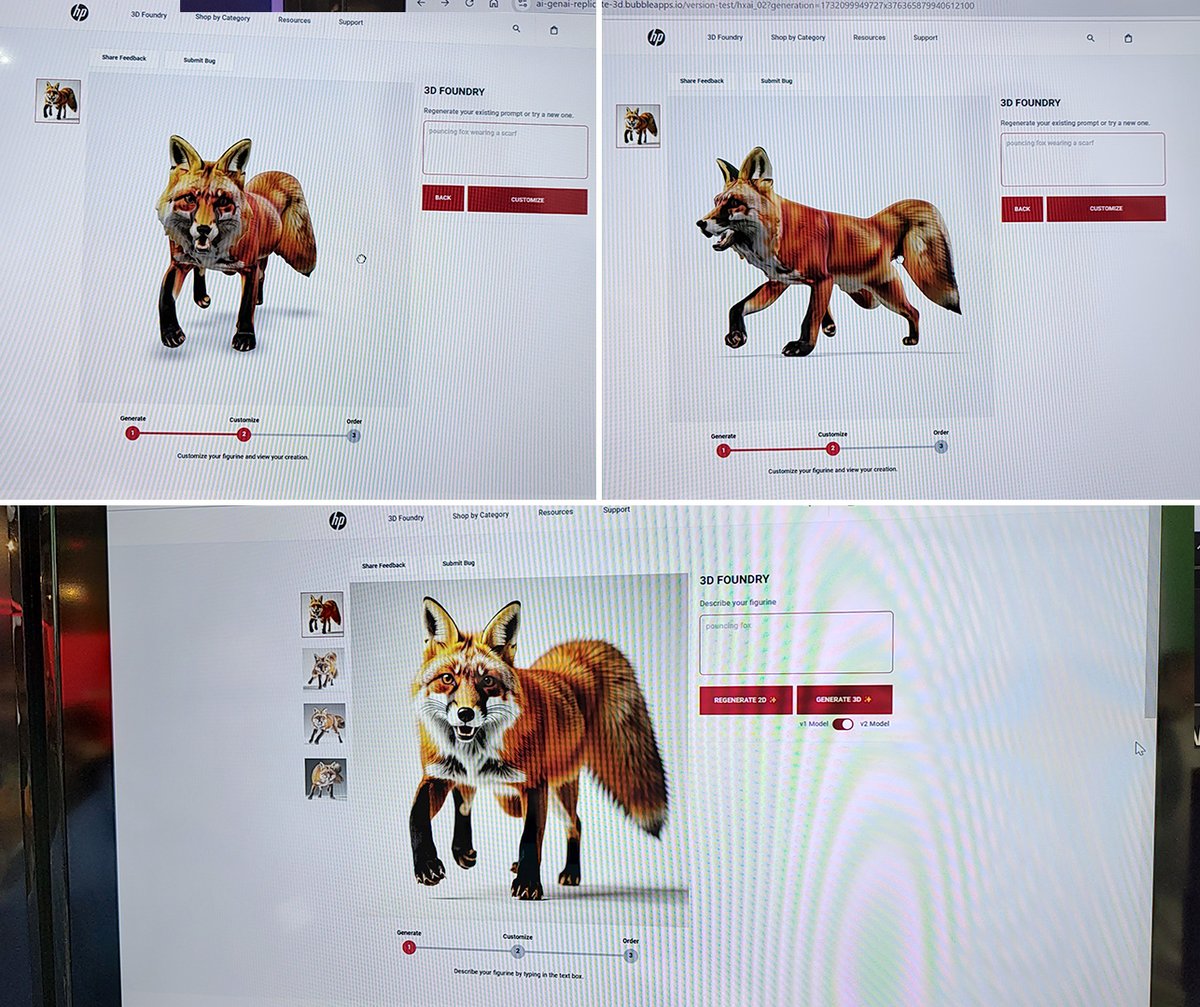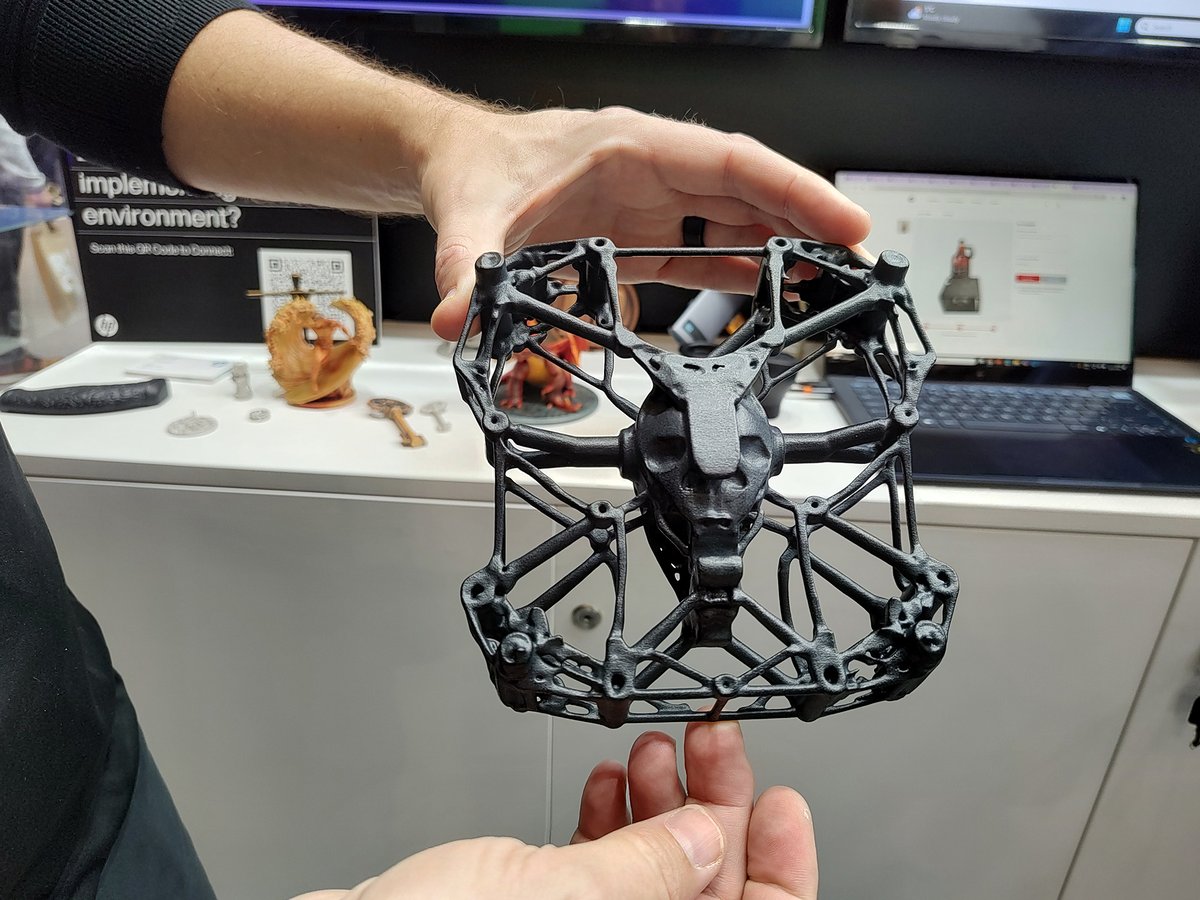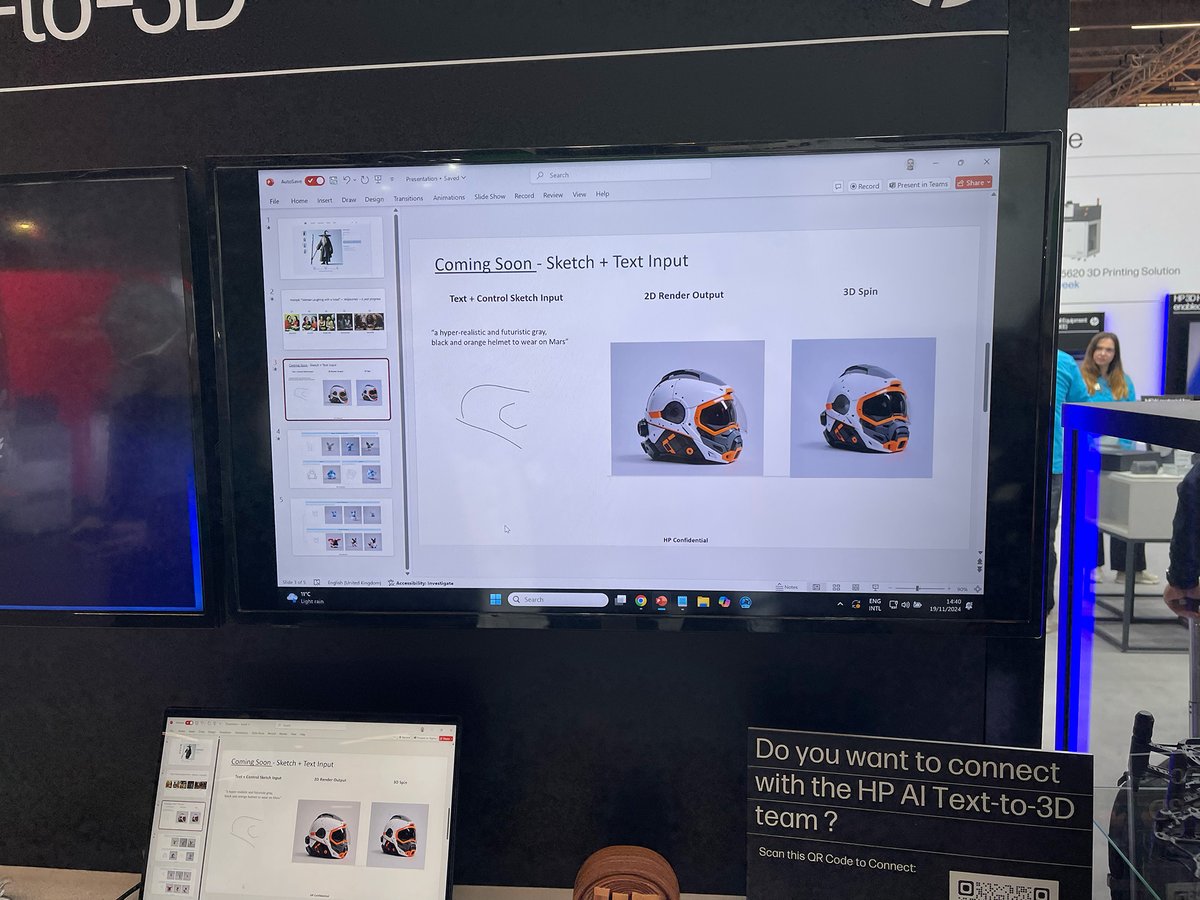At Formnext 2024 in Frankfurt, Germany, we got to try the HP AI Text-to-3D generative AI model, internally named “3D Foundry”. Though HP corporate has cautioned the model is a “proof-of-concept,” HP’s 3D design team has high hopes for a browser-based public release early next year.
Pierre Kaiser, HP’s head of 3D design, spoke with All3DP next to the HP AI Text-to-3D display, where attendees are treated to on-demand demonstrations and 3D printed models created with the application line flanking shelves. He said that a public model, ideally after some free trial use, could have fees for generation. “The compute cost is non-zero,” Kaiser said, but, as the reality of a public release, neither the scope of a trial nor potential user costs are clear. However, the company’s 3D design team seems to be looking to recoup costs rather than turn a profit, underscored by its hopes to eventually release a downloadable local version of the software, and one for use with HP AI laptops.

HP AI Text-to-3D is based on a generative AI chain employing text-to-text, text-to-image, and 2D image-to-3D models, followed by a computational pass to optimize the model for 3D printing – a clear focus of the system. The text-to-text process has been trained to create a significantly longer prompt for 2D image generation (“maybe 500 words,” Kaiser said), while the text-to-2D image process is based on an existing third-party AI model with custom training data. In the future, Kaiser says he’d like the software to use a variety of generative AI models to give users a stylistic choice between them. For now, a prompt returns four 2D images in a single style, which can be chosen between for the next generative link.
HP’s 2D-to-3D system works by mimicking a photogrammetry process like in 3D scanning, Kaiser explained. Based on the image a user has chosen the system estimates depth, which Kaiser described as “the fundamental layer” of the process. Then, the software creates new 2D images to fill that depth and finds “successful pairs,” eventually resulting in a 3D model.
The application isn’t without problems. In our demonstration, the system was stuck generating at 99%, caused by too many fine details like strands of hair, Kaiser suggested. A preceding and second attempt were both more fruitful.
From there, users can add a textured base to their model, send it to a 3D printing service, or download it as an MJF file.

HP AI Text-to-3D’s results are impressive, but HP isn’t shy about its limitations – Arvind Rangarajan, Global Head of Software and Data at HP Personalization and 3D Printing recently told All3DP they’re keen to keep expectations surrounding AI realistic and not overpromise. That aligns with HP corporate’s cautions that the exciting software is a proof-of-concept and assertion that “a launch is not guaranteed.”
In its current state, the software is very good at generating convincing organic shapes, Kaiser said, but not good at precise measurements critical for creating functional parts. The solution is programmatic design: hard-coded designs and constraints that make model generation easy for particular applications. Key caps are an example shown at Formnext, where the base key cap conforms to a specific design and is used as a base for a 3D model. Other applications are in development behind the scenes, and HP AI Text-to-3D would launch with a variety of programatic designs, including iPhone cases that generate a bas relief design and more.
“I think I would like to have hundreds of them, and I would like to have customers bring their own output format,” Kaiser said when asked whether users will be able to input their own computational design parameters. “There’s a plan, it’s just not implemented yet.”
Behind the scenes, Kaiser’s team does create application-specific AI models for its partners, so it certainly seems like there’s room for growth.
That’s not to say functional design isn’t possible in HP AI Text-to-3D without using programmatic design. One example of the tool’s potential on display is a drone body, created with hollow tubes to make it lightweight. It took some experimentation with prompts, said Brian Ingold, HP’s Head of 3D Solutions who generated the model, but ultimately delivered.

And more precision functions are coming. In a roadmap presentation, Kaiser showed models being generated within the constraints of a “control image,” a simple sketch: first a helmet, generated from a text prompt and minimal outline sketch; then a more detailed character sketch resulting in a colorful, cartoonish model.

In its current, organic-focused form, HP AI Text-to-3D is pretty well ready for use – as evidenced by its interactive showing at Formnext – and specialized models are already in active use at some HP 3D partners. HP 3D Design’s immediate concern is implementing restrictions for generating protected IP to ensure HP AI Text-to-3D is as legally compliant as possible if publically released.
If all goes well, HP AI Text-to-3D will be a growing application. Kaiser has three years of plans for his team, he said, it just depends how much funding they’ll have. To be notified if a launch does indeed happen, sign up for the HP AI Text-to-3D waiting list.
Update 28/11/2024: HP got in touch to add more context, such as that "3D Foundry" is an internal name that may not remain, and allay some of the strong targets and statements expressed on the Formnext show floor. We've updated this article to reflect the new information.
Read more recent news:
License: The text of "We Tried HP’s Generative AI Text-to-3D Model" by All3DP is licensed under a Creative Commons Attribution 4.0 International License.
 Stay Informed, Save Big, Make More
Stay Informed, Save Big, Make More